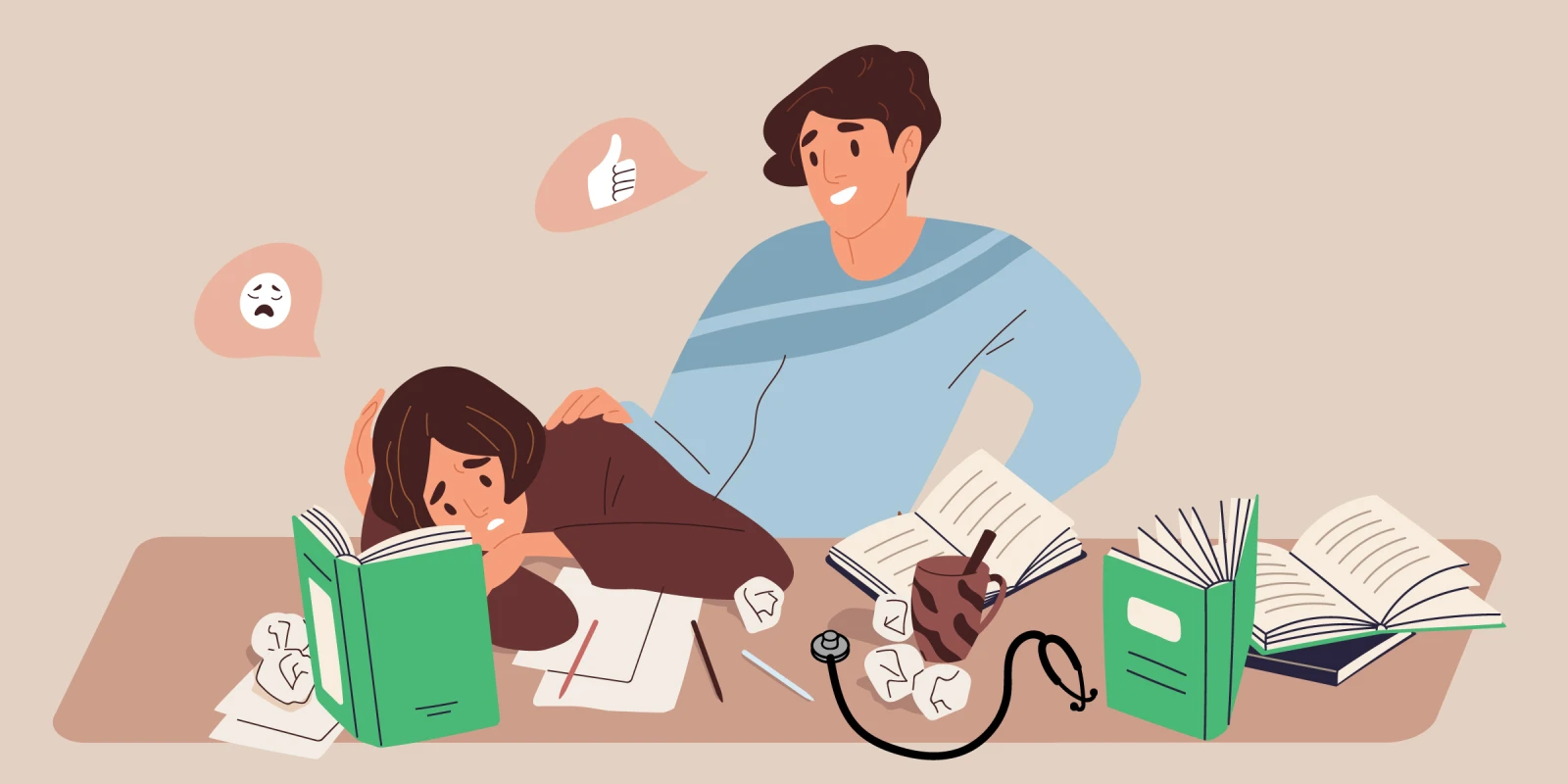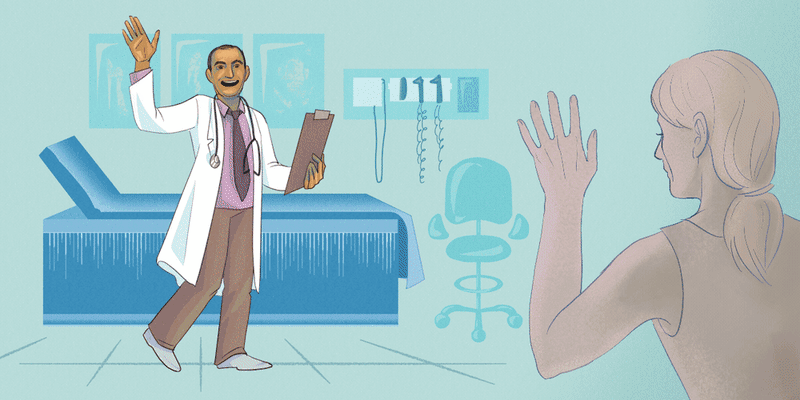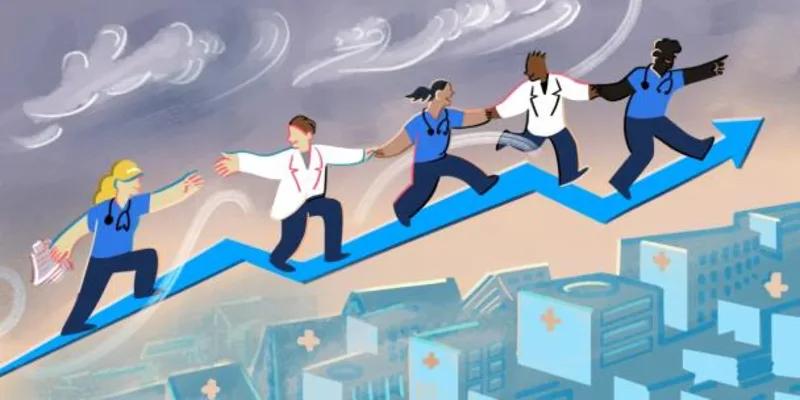I adjusted my grip on the stethoscope. It felt smooth and cool in my hands, albeit slightly bulky. On one end were the earpieces; on the other was the two-sided chest piece. On the plastic diaphragm I could see my medical school’s logo imprinted in blue and silver ink; on the flip side, I could make out my own name engraved within the concave bell: Saljooq Asif.
From what I’ve been told, the stethoscope distribution is a touching institutional ceremony made possible by generous alumni and donors — but this year, the tradition had to be reinvented. We were the Class of 2024, starting school in the middle of a pandemic. Given the strict on-campus restrictions, the event took place in the middle of lab on a Tuesday afternoon in September without any pomp and circumstance. Boxed stethoscopes were handed out to all as if we had gathered around a hastily prepared Thanksgiving meal, strangers expected to become kin.
“You get the sense of community when you go through these events,” a fellow first-year said in a commemorative video that our school would later send out. “And I feel like during COVID, we’ve kind of all been separated and we need something to remind us that we’re all in this together.”
Were we really all in this together, one big happy family? I looked to my younger sister on my right as we sat in lab. In her hands was her own stethoscope, nearly identical to mine. After enduring the tedious and nerve-wracking application cycle together, we had finally entered the same medical school side by side and settled into our shared apartment earlier that summer. We were a sibling student doctor duo in the making.
“We’ve had students who were siblings at this school, but never in the same class year!” one of our professors said to us when the semester began. “It’s great to have someone by your side as you go through this. You each have someone to study with, to practice with. That’s invaluable, especially during a pandemic.”
My sister and I agreed. We were both grateful for one another’s presence—but only a few days before the stethoscope distribution, after our very first exam, we had reached our boiling point.
“I don’t want to see your ugly face anymore!” my sister shouted from across the room.
“And I’m tired of living with you!” I shot back. The first month of school had been more grueling and exhausting than either of us had anticipated. There wasn’t even anything fun to look forward to, all of the hallmark festivities and ceremonies cancelled under the gloom of the pandemic. We were isolated from the rest of our class, and now we were at odds with one another in our cramped apartment. Our sibling student doctor duo falling apart.
Medical school’s reputation precedes itself; the stress and pressure can test even the strongest relationships. But medical school also comes with an inherent sense of community, a group of committed individuals on the shared journey of doctorhood. It is marked by a host of traditions and rituals that binds these travelers together “for life.” None is more iconic than the white coat ceremony, an initiation that marks students’ official transition into the medical profession. With the donning of a piece of cloth around your shoulders, you transform from premedical student to student doctor in the blink of an eye.
My sister and I did not have the privilege of a formal white coat ceremony. Our white coats arrived in nondescript gray plastic packages instead, dropped off on our doorstep in the cold of December. Without the applause and photos and speeches, the coats seemed robbed of their trademark power. We awkwardly shrugged them on over our pajamas, realizing that the white coats were nothing but ordinary garments. A few seconds later, we took them off and went back to studying.
“How anticlimactic,” my sister laughed as she sat down at her desk. “Is this what initiation into a fraternity is supposed to feel like?”
Our class was forced to forego the ceremonies associated with medical school in the wake of the pandemic. Even gross anatomy lab, another rite of passage, had to be amended: rather than performing cadaver dissections ourselves, we rotated in isolated groups and learned from various cadaver prosections. My peers and I never held a scalpel and cut into leathery skin doused in formaldehyde. We never sat in lecture halls and formed in-person study groups. Traditions such as these had to be abandoned—traditions necessary for developing networks and building community. As one of my peers complained in our class GroupMe, what about the “life-long friendship formation” that is supposed to occur during this phase of our lives? Who are we when tradition becomes extinct, when kinship becomes unattainable?
More than a year after the aftermath of our first exam, my sister and I have collectively adjusted to the rigors of our education. We give one another space and look to one another for help—not as student doctors or peers, but first and foremost as siblings. Our identities as brother and sister have shaped us long before medical school and will continue to do so in the future when we are physicians, when we have left this phase of our lives behind. Like always, we will call one another out with a bluntness that no friend or colleague will ever dare to do. And like always, we will comfort one another in ways that only family can do.
Studying together in our cramped apartment has now become its own rite of passage. We’ve created our own traditions in the midst of isolation, mundane practices that we’ve bestowed with meaning: take-out delivered to our door after every exam, decks of Anki flashcards split in half, an episode or two of Netflix when we find the time. We quiz one another and rehearse with one another, picking up our stethoscopes and putting them to good use. I play patient and she doctor, moving fluidly from history-taking to physical examination to assessment and plan.
And then we switch roles, she the patient and I the doctor wearing a white coat over my pajamas. I lean over my sister and place the diaphragm of my personalized stethoscope on her chest wall. The name I see reflected back is mine, but the heartbeat I hear is hers.
Do you have a sibling in medicine? Share how that relationship has changed you as a clinician in the comments.
Saljooq Asif, MS is a second-year medical student at New York Institute of Technology College of Osteopathic Medicine. He is also a Lecturer in the Program in Narrative Medicine at Columbia University, where his scholarship focuses on the broader health humanities in relation to narrative ethics, racial justice, popular culture, and more. He is a 2021-2022 Doximity Op-Med Fellow.
Illustration Collage by Jennifer Bogartz / GoodStudio / shutterstock







